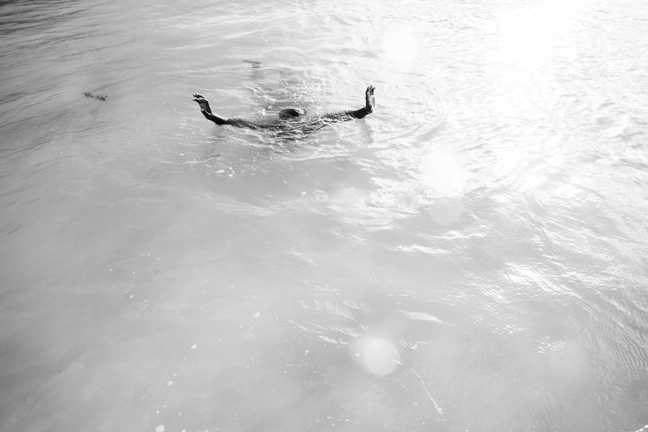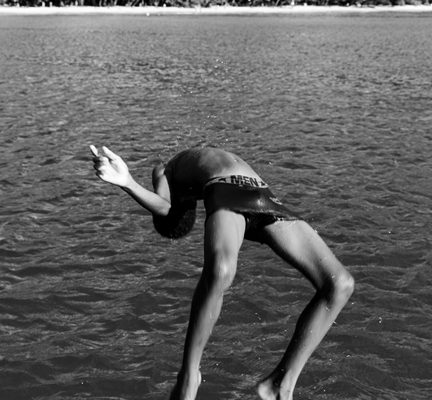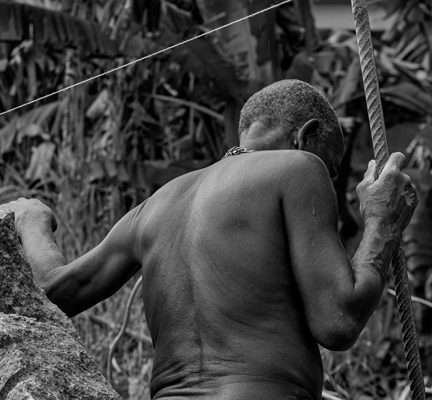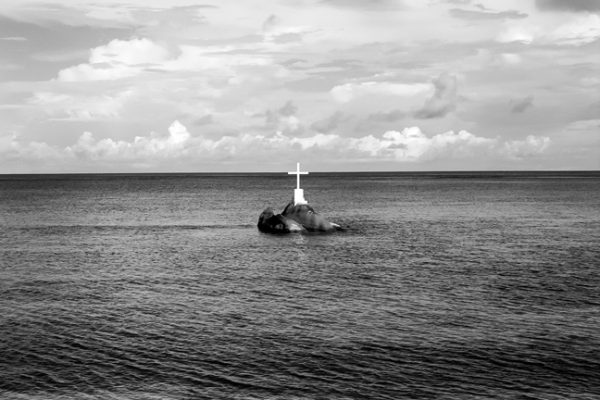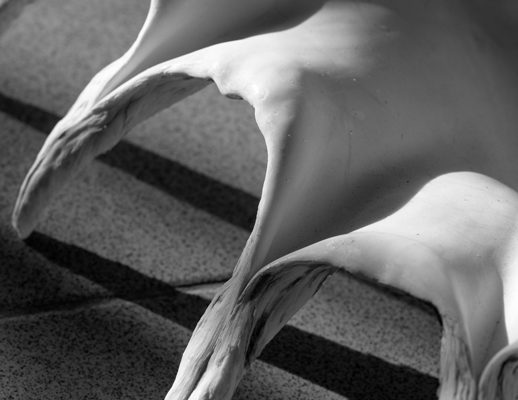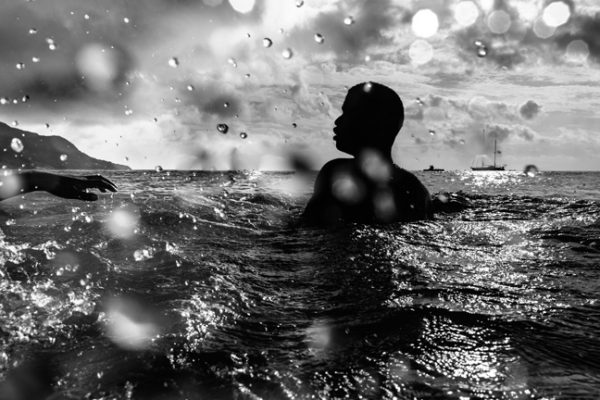“We belong to the elemental communion. We listen to the voices of the earth. We rediscover the secret of the tender and violent beauties of the world.”~Suzanne Césaire
How do we move through echoes of trauma with grace?
How do we practice reverence for land, self, and spirit in the wake of colonial histories?
How do we stay afloat on the tides of the present?
How do we practice reverence for land, self, and spirit in the wake of colonial histories?
How do we stay afloat on the tides of the present?
In Water Lines, Seychellois-American artist Natasha Moustache asks these questions while looking towards the Seychelles as a site of layered spiritual inquiry. Through twenty photographs and a triptych printed on flowing fabric, Moustache invites us into an archipelagic way of seeing: each image a water line, each moment an invitation to float between grief and grace, body and land, past and future.
This archipelagic thinking also gestures outward, toward the Caribbean, as another island geography shaped by diaspora and colonialism. Though separated by vast waters (the Seychelles is an archipelago of 118 islands in the middle of the Indian Ocean), the Seychelles and the Caribbean share legacies of forced migration, creolization, and cultural survival. In exploring these connections, Moustache draws on a lineage of thinkers who have imagined the island not as isolated, but as a node in a vast web of relations. The work echoes Édouard Glissant’s ideas of “archipelagic thinking” — but also reaches back to the writings of Suzanne Césaire, whose reflections on Caribbean nature, surrealism, and poetics shaped this discourse, though her voice has too often been overshadowed. Water Lines honors this deeper, often hidden lineage, inviting new conversations and solidarities across these oceanic worlds.
In these photographs, questions and reflections emerge that refuse easy categorization. There is an aching spirituality that pulses through everything, but it’s as much about the beauty of the body and the holiness of the land as it is about God or religion. Across the images, we are reminded to pause and listen to the light, look for the laughter, and feel the sea arc its back inside us. These images hold us in their hands, making us witnesses to the necessity of interdependence in the wake of history’s violence.
In the gallery, which Natasha has made into a place to reflect on both ancestral lineage and personal return, waves echo across the walls. A free-hanging image shifts and breathes with the air. Each photograph becomes a grounding point — a water line — a reminder of the porous relationship between self and world, past and present.
Here, spirituality is not confined to any one church or doctrine. It emerges as a practice of permission: the power to be one’s own Church; to honor the tides that move through us; to tend both land and self with care and reverence; to remain awestruck in the face of all that connects us.
Water Lines honors this process — the slow reclamation of land as home, body as vessel, spirit as tide. Each photograph is a small act of devotion: a beacon of stillness in a shifting world.

